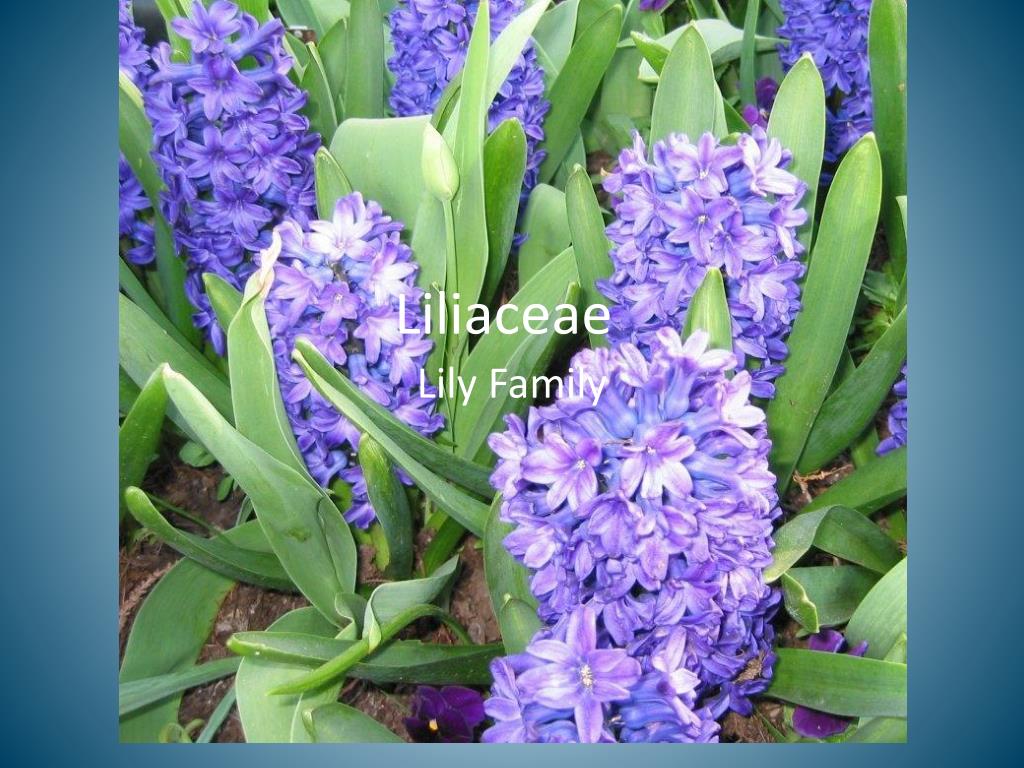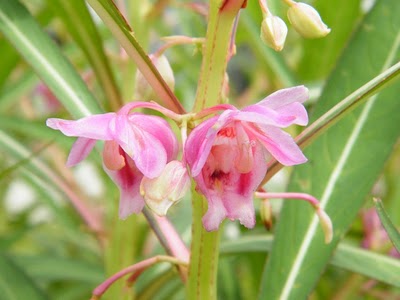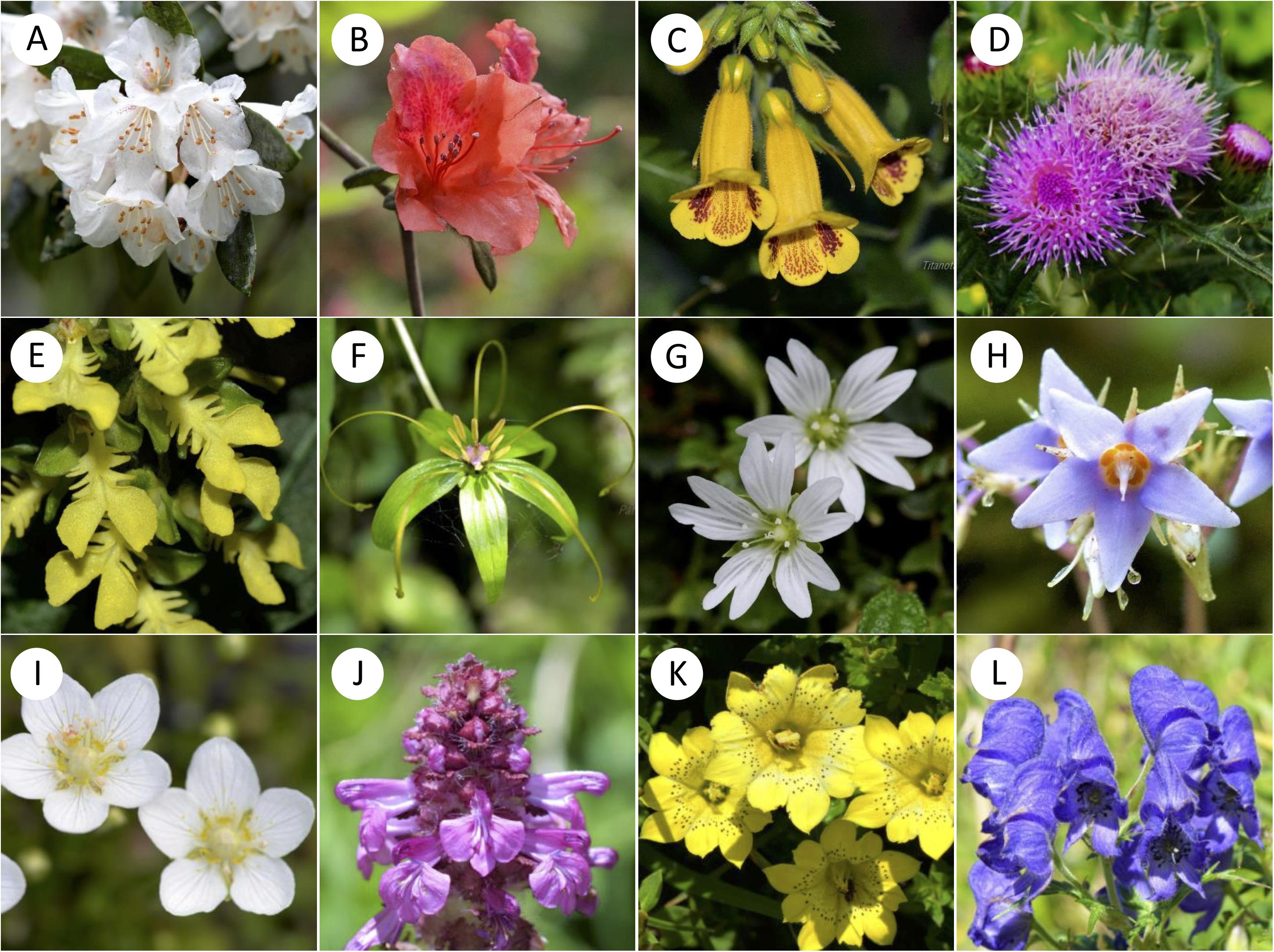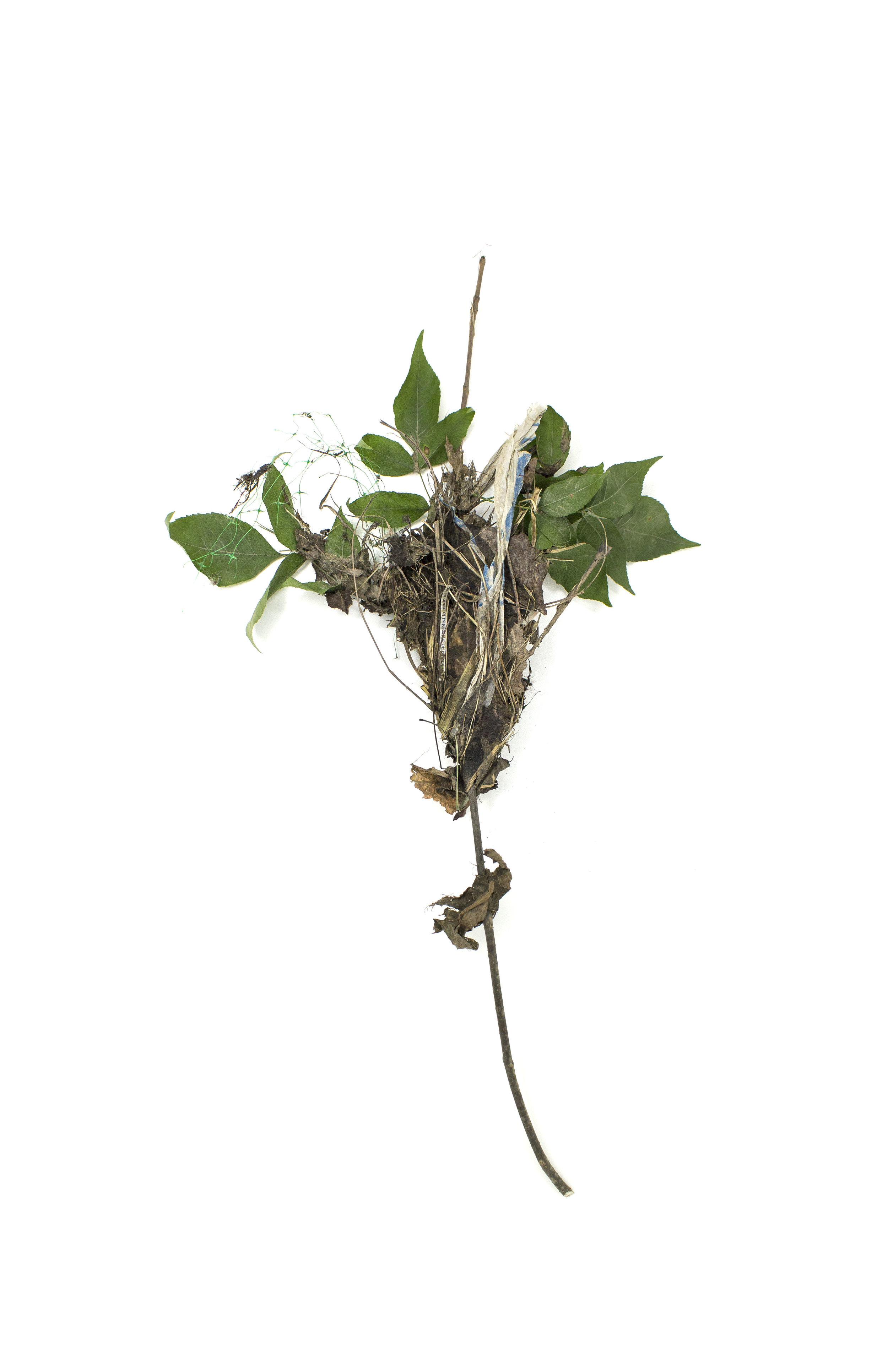Species highlighted Beautiful plants: With variously coloured flowers and peculiar floral structure. Family Balsaminaceae : Two genera- Hydrocera Blume. - ppt download

Species highlighted Beautiful plants: With variously coloured flowers and peculiar floral structure. Family Balsaminaceae : Two genera- Hydrocera Blume & Impatiens L. Succulent annuals or perennials, rarely becoming shrubs or epiphytes. Great horticultural potential. India : Genus represented by 209 species. Distributed in three major centers of diversity i.e. Western Himalayas, Hills of North Eastern States and Western Ghats. 95 species in Peninsular India, more than 82 are endemic and confined to Western Ghats. 30 species have already in threatened category including 19 critically endangered ones.
Family Balsaminaceae : Two genera- Hydrocera Blume & Impatiens L. Succulent annuals or perennials, rarely becoming shrubs or epiphytes. Great horticultural potential. India : Genus represented by 209 species. Distributed in three major centers of diversity i.e. Western Himalayas, Hills of North Eastern States and Western Ghats. 95 species in Peninsular India, more than 82 are endemic and confined to Western Ghats. 30 species have already in threatened category including 19 critically endangered ones..
Motivations for undertaking the study Delicate structure Explosive fruits Anthropogenic pressures Habitat degradation Fluctuations in climate Low insect visitation rate Inbreeding depression Low percentage of seed germination
Majority of the Impatiens species are mainly reproduced by means of cross pollination. So their survivability mainly depends on pollination by the visitors. The visitation rate of the pollinators depends upon its colour, size, shape, fragrance and nectar availability. In this background, a study had been framed to analyze the relation ship between floral structure, pollination and breeding system of selected Impatiens in the Western Ghats..
Species selected for the study Impatiens coelotropis C.E.C.Fisch.
Impatiens henslowiana Arn.
Impatiens platyadena C.E.C.Fisch.
Impatiens pulcherrima Hook.f. Impatiens pulcherrima Dalzell
Impatiens trichocarpa Hook. F.
Impatiens verticillata Wight.
The northern parts and extreme southern tips are less moist, while the central and Southern Western Ghats receive heavy annual precipitation of up to 6000mm, which supports dense diverse tropical forests rich in species diversity and endemism. The mountainous configuration, high altitude, heavy rainfall and humid climate makes this tract one of the botanically richest areas of India and therefore designated as one among 34 globally recognised biodiversity hotspots in the world..
Exploration trips Phenology Floral morphology Pollination Breeding experiments Methodology
Every species of Impatiens have its special type, colour and shape of floral organs. §The floral parts (lip with spur and wing petals) are specially adapted for entomophilous pollination especially by bees and butterflies. §Calyx : Sepals 5, lateral 2 sepals are green or coloured, lower 3 sepals are modified into lip with spur. In I. coelotropis, the lip is large, deeply succate and deep green in colour. Usually the lip is boat shaped and the spur is long and coloured. §Corolla : 5 Petals. One standard petal. The lateral petals are usually bright coloured, the arrangement of wing petals act as a landing platform for bees and butterflies. Beautifully coloured/brightly coloured petals attract the floral visitors for pollination..
The dithecal tetrasporangiate anther are connivent and open either apically or laterally by means of pores or slits §Gynoecium : The anthers lie as a cap above the gynoecium which has a 5 locular, syncarpous ovary with star shaped stigmas. The style is reduced. After the shedding of androecium the coherent stigma commonly spread and star shaped receptive stigmatic surface is exposed. The flowers are protandrous favouring cross pollination..
coelotropisI. grandisI. henslowianaI. phoenicea Flowering periodAug- JanAug-DecJuly-Dec Flower opening time h h h h Flower typeZygomorphic Nectar (ul) 5.7± ± ± ±1.08 Flower colorRedWhite Brick red No. of anthers per flower5555 Anther dehiscence timeProtandrous Mean no. of pollens per flower 42,52048,62038,25028,860 Mean no. of ovules per flower Pollen size (µm)38.03±2.6736± ± ±3.37 Stigma typeWet and non pappillate Wet and non- papillateWet and non pappillate Percentage of fruit set in natural condition 8%30%36%10%.
trichocarpaI. verticillata Flowering periodSep-DecJuly-DecJuly-NovAug-Dec Flower opening time h h h h Flower typeZygomorphic Nectar (ul)8.3± ± ± ±0.81 Flower colorRedPink Scarlet red No. of anthers per flower5555 Anther dehiscence timeProtandrous Mean no. of pollens per flower 37, ,28019,400 Mean no. of ovules per flower Pollen size (µm)32± ±7.228±3.5 Stigma typeWet and non pappillate Wet and non- papillate Percentage of fruit set in natural condition 34%38%29%Nil.
Lateral View SP AN O LS WP L LS WP SP O WP S S L LS WP
SP AN WP O L LS WP SP AN WP S
Some flowers are born with lip above and the standard petals which are lowermost. The reversal position of flower buds occur as a result of a process called resupination. This process takes place 2-3 days before anthesis. Darwin suggested that, resupination supports pollination because the labellum assumes the position of a lower petal, so that insects can easily visit the flower..
This observation is similar to that of our candidate species also. Young seedlings of selected Impatiens begin to appear after the commencement of monsoon (June). Some of the high altitude balsams opens in the night (I. coelotropis, I. henslowiana, I. grandis, I. phoenicea, I. trichocarpa) and the rest of them bloom in the early morning. The plants were in flower for a total of 180 days in a year. The average life span of each flower is 2-4 days. Fruit development was completed between days after pollination..
In different climatic regions, species of pollinators are varying. The insects land at the front of the flower and passes through the corolla to the spur behind the sepal to collect nectar. The insects collecting nectar from the spur, its back comes in contact with the androecium. The insect comes in contact with the second time, the androecium falls off and the stigma becomes exposed. Another insect visits the flower for nectar, its back comes into contact with the receptive stigma and thus pollination takes place. Finally, the perianth falls off and the insects visit have come to cease..
noName of the pollinator Foraging time Foraging nature Foraging period (hr) Stigma Touch 1 Apis cerana indica (c, pl, ph, g, v, pu, t, h) DayNectar and pollen Apis dorsata (c, h, g) DayNectar and pollen Trigona iridipennis (g, v, t, h) DayNectar and pollen Danaus chrysippus (pl, ph, pu, g, h) DayNectar Danaus genutia (g, h, t) DayNectar Tirumala limniace (v, g, h, pl) DayNectar Parantica aglea (pu, ph, h) DayNectar
(c) DayNectar : 10 – 15 pollens, ++ : pollens, +++ : more than 50 pollens C: I. coelotropis, g: I. grandis, h: I. henslowiana, ph: I. phoenicea, pl: I. platyadena, pu: I. pulcherrima, t: I. trichocarpa, v: I. verticillata.
Pollinators of Impatiens grandis Trigona iridipennisApis cerana Badamia exclamationis Apis dorsata Ceratina cucurbitinaOecophylla smaragdina
Floral visitors of Impatiens pulcherrima
Pollinators of I. trichocarpa, I. platyadena and I. coelotropis
In open pollination, 8-38 % fruit set was observed. Impatiens coelotropis, I. henslowiana, I. phoenicea, I. platyadena, I. trichocarpa and I. verticillata are exclusively xenogamous pollinated. The other species such as I. grandis and I. pulcherrima permits both geitonogamous and xenogamous pollination. Percentage of fruit set in manual pollination is higher than that resulting from natural pollination, which strongly indicates that some external agents are required for successful pollination..
Out crossing is very significant in the pollination biology of Impatiens, which ensures better seed output. In Impatiens, the morphology, size and shape of the flowers may vary between the species, but the breeding system of the species is almost same. Breeding experiments demonstrated that the percentage of fruit set in manual pollination was higher than that resulting from natural pollination, which strongly indicates that some external agents are required for successful pollination. The visitation rate of the pollinators was affected by heavy rainfall, poor sunlight and humidity. In general, the number of visitors per population and visitation rate was low in the natural habitat, which leads to poor fruit set. The percentage of seed germination was also low. Their dependence on specialised habitat, a narrow environmental niche, scarcity of pollinators, poor fruit set, low percentage of seed germination could be the reasons for its limited distribution and endemism. Conclusion.
Financial support received through a research project from DST, New Delhi is acknowledged. I express my sincere thanks to my colleagues and research scholars, viz. Dr. R. Ramasubbu, Dr. S.K. Kulloli, Mrs. Jayalakshmi. M and Ms. Maria Theresa for help during field collection..
With a spirit of care and love towards nature and a strong conservation ethic that focus protection on wilds can aim the conservation strategy to a long extant..!!. Thank you.

PPT - Liliaceae PowerPoint Presentation, free download - ID:2255002

SciELO - Brasil - Floral glands in asclepiads: structure, diversity and evolution Floral glands in asclepiads: structure, diversity and evolution

The Other Balsaminaceae — In Defense of Plants

Frontiers Floral Color Diversity: How Are Signals Shaped by Elevational Gradient on the Tropical–Subtropical Mountainous Island of Taiwan?

Species highlighted Beautiful plants: With variously coloured flowers and peculiar floral structure. Family Balsaminaceae : Two genera- Hydrocera Blume. - ppt download

Species highlighted Beautiful plants: With variously coloured flowers and peculiar floral structure. Family Balsaminaceae : Two genera- Hydrocera Blume. - ppt download

Species highlighted Beautiful plants: With variously coloured flowers and peculiar floral structure. Family Balsaminaceae : Two genera- Hydrocera Blume. - ppt download

SciELO - Brasil - Floral glands in asclepiads: structure, diversity and evolution Floral glands in asclepiads: structure, diversity and evolution

Species highlighted Beautiful plants: With variously coloured flowers and peculiar floral structure. Family Balsaminaceae : Two genera- Hydrocera Blume. - ppt download

Species highlighted Beautiful plants: With variously coloured flowers and peculiar floral structure. Family Balsaminaceae : Two genera- Hydrocera Blume. - ppt download

Species highlighted Beautiful plants: With variously coloured flowers and peculiar floral structure. Family Balsaminaceae : Two genera- Hydrocera Blume. - ppt download

Ericales - Balsaminaceae, Perennial, Herbs

Flowers of the Anthropocene — Mallory Burrell Anderson

Reed College, Bio 332: Vascular Plant Diversity